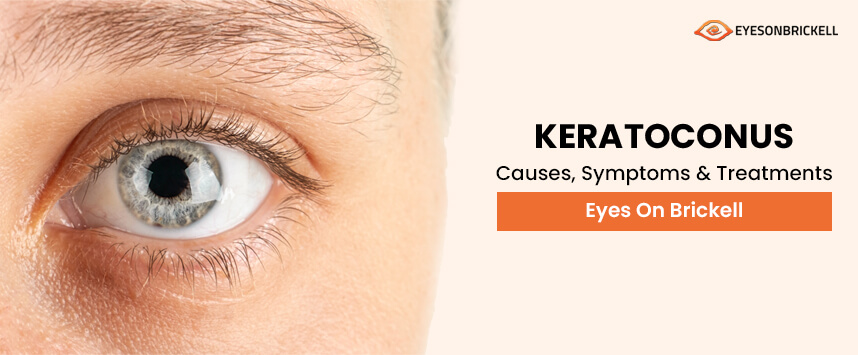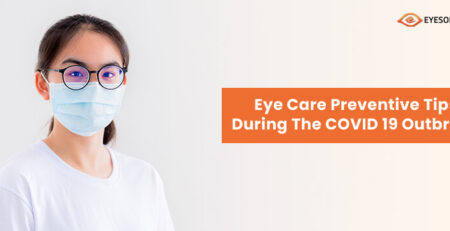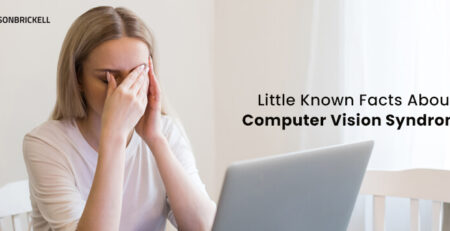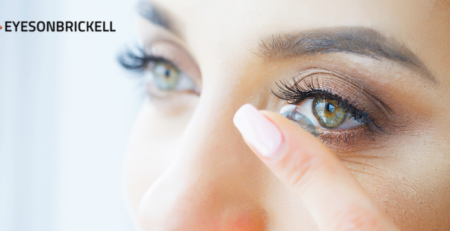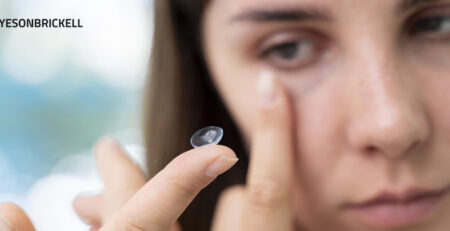Keratoconus – Causes, Symptoms & Treatments
Almost 80% of what you see or observe comes solely from your eyes. So, good eye health is a key to a person’s overall well-being. Just the opposite, any deterioration in the eye can pose threats to your vision. After all, vision problems have an impact on every aspect of your life and increase your dependency on others. While glasses and a Contact Lens can help with some vision problems, others may necessitate specialized treatment. Keratoconus is one such eye condition that needs professional attention and treatment. Do you know what Keratoconus is?
Keratoconus is an eye condition that causes the cornea, the second layer of your eye, to thin, swell, and form a cone shape. Your corneal tissues deteriorate as a result of the condition, resulting in distorted vision. Keratoconus is most common during adolescence and the early twenties.
Eyes on Brickell has been taking care of your eyes and vision for 10+ years. Over the years, our motivation has remained consistent: to provide high-quality eye care throughout southern Florida. Get in touch with our eye experts for optimum eye care services!
Are you worried about Keratoconus, its causes, symptoms, and treatments? Let us go over Keratoconus in greater detail in this post:
What Leads a Person to Keratoconus?
Even if you wear a Contact lens for protection, the eye condition will worsen if you do not treat it. However, there are no specific known causes that have been linked to Keratoconus. Meanwhile, researchers are still trying to figure out what causes keratoconus. However, some environmental and genetic factors may lead a person to Keratoconus.
Some of the considerable reasons that may develop keratoconus are as follows:
- Environmental factors include excessive eye rubbing and Contact lens use.
- Another factor that may expose you to keratoconus is a family history of the condition.
- Some underlying disorders, such as asthma, sleep apnea, and Down syndrome, may also contribute to the development of keratoconus.
Unless you undergo regular eye exams, it may be difficult to detect keratoconus. Since the symptoms of the eye condition change over time, identifying them can be difficult. Of course, distorted or blurry vision is one of its most noticeable symptoms, but this symptom is common in other eye disorders as well.
Here are some notable symptoms of keratoconus:
- A sudden shift in your vision.
- Having difficulties while driving at night.
- Near and far objects appear blurred.
- Excessive sensitivity to light and glare.
- Astigmatism and irregular myopia Rapid changes in your prescription glasses.
- Edema or swelling of the cornea that happens suddenly.
Keratoconus increases a person’s sensitivity to light and glare while it is developing. The disorder typically takes 10 to 20 years to develop and manifest its symptoms. However, as keratoconus progresses, your cornea will rapidly bulge.
Diagnosing Keratoconus
An appointment with your eye doctor will be a must if you experience the mentioned symptoms over and over again. For the diagnosis of keratoconus, an eye specialist will scrutinize your medical history as well as your family’s medical history. After that, they will ask you to undergo an eye exam. The eye exam will:
- Scrutinize the overall appearance of the eyes.
- Determine how well your eyes are moving.
- Identify the visual acuity as well as the visual field.
Despite the regular eye exam, the eye specialist may also ask you to undergo the slit lamp exam. Some eye doctors may even perform corneal topography – a specialized test that uncovers underlying eye changes that are not visible otherwise.
Best Treatments Available for Keratoconus
Did you know that keratoconus, if moderate or mild, can be treated with contact lenses or eyeglasses? However, this is not a long-term solution. Contact lenses will not help you get needed vision correction in the long run because keratoconus will continue to develop. This will manifest as progressive keratoconus. You will eventually need to look for more effective keratoconus treatments.
Consider some of the most effective treatments for progressive keratoconus:
- Customized soft contact lenses.
- Corneal crosslinking.
- Corneal transplant.
- Intacs (arch-shaped corneal inserts).
Keratoconus-Related Complications
Keratoconus can develop quickly in rare cases, leading to ‘corneal hydrops.’ The complication is rare, but when it occurs, a portion of your cornea will break. When you have corneal hydrops, the flow of fluid in your eyes is abnormally increased, resulting in extreme swelling and pain. So, while it may be preferable to wear a Contact lens before receiving treatment, you must prioritize treating the problem.
Keratoconus can also cause permanent vision loss if not treated. Keratoconus can cause scarring of the cornea if it progresses rapidly. So, don’t take keratoconus lightly and seek treatment from a specialized eye doctor.
Is it possible to prevent keratoconus, and if so, how?
While there is no permanent cure or prevention for keratoconus, you can try to consult with an eye doctor. However, corneal cross-linking may be one of the most effective methods of halting its progression. It may be possible to diagnose and treat keratoconus in its early stages, but this is not always guaranteed.
Our compassionate eye care professionals understand their role in improving your quality of life. They give them all to ensure that you always see the world in the best light and with a clearer vision.
For all your vision care needs, visit Eyes on Brickell right away!

